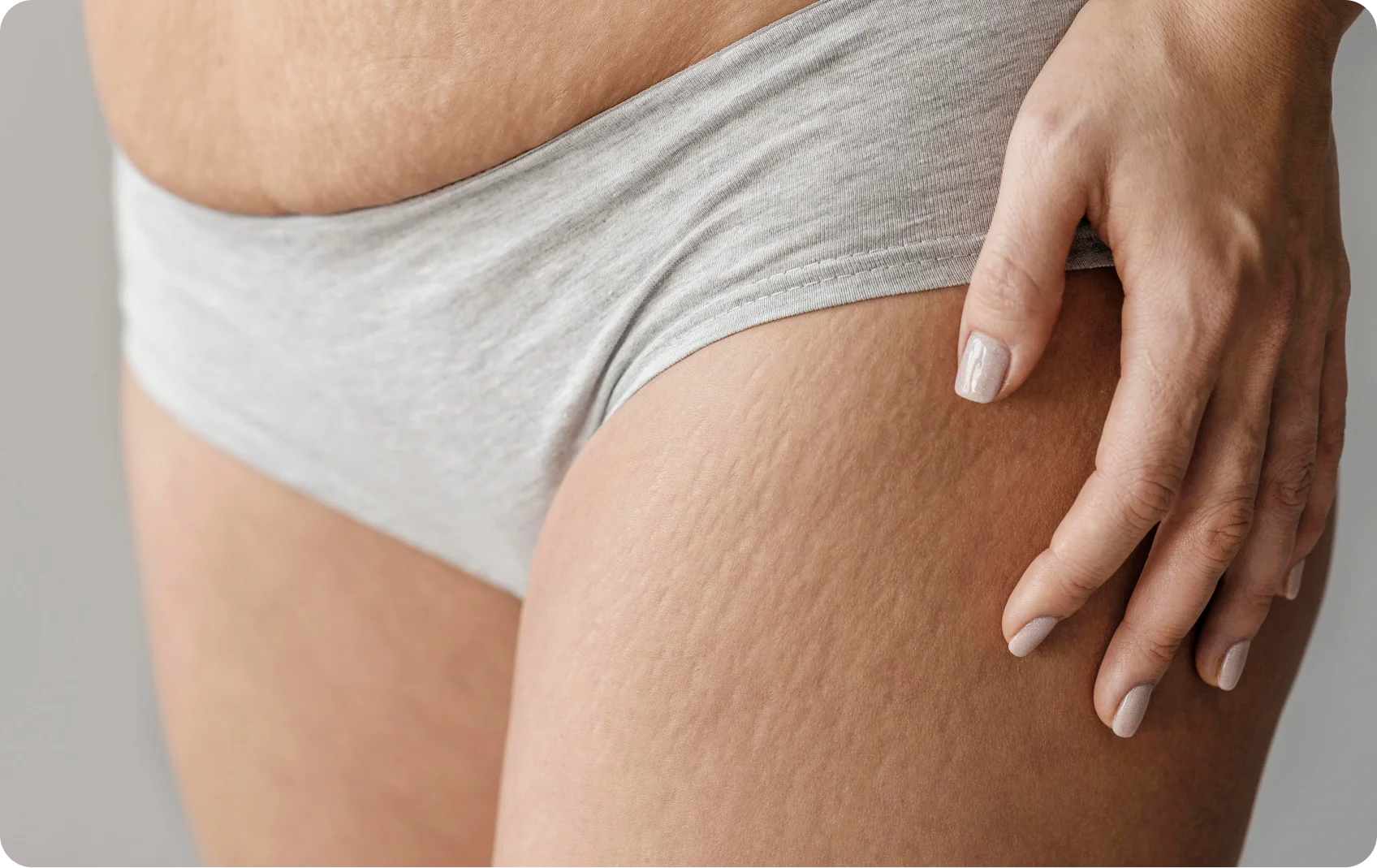
Stretch Mark/Scar Treatment
Stretch Mark and Scar Treatment aims to reduce the appearance of scars or improve skin tone and texture. Scars may result from injury, skin stretching, or surgery. Treatment options vary depending on the type, size, location of the scar, and the individual’s skin type.
Common Methods for Treating Stretch Marks and Scars:
1- Cosmetic Products:
- Silicone Gel and Adhesive Bandages: Silicone gels or adhesive bandages can be effective in reducing the appearance of scars. These products help retain skin moisture and accelerate the healing process.
- Cosmetic Creams and Lotions: Products containing ingredients like retinoids, alpha hydroxy acids (AHAs), beta hydroxy acids (BHAs), and vitamin C can promote skin cell renewal and help diminish the appearance of scars.
2- Laser Treatments:
- Laser Therapy: Lasers can target the skin’s surface or deeper layers to aid in the restructuring of skin tissue. Various types of lasers, such as CO2 laser and fractional laser treatments, are commonly used.
3- Microdermabrasion
- Microdermabrasion: This procedure gently exfoliates the skin’s surface using fine crystal particles or a diamond-tipped device. It helps remove the upper skin layer, creating a smoother appearance.
4- Chemical Peels:
- Chemical Peels: Using chemical acids (e.g., glycolic acid or trichloroacetic acid), this procedure exfoliates the skin surface, improving skin tone and texture.
5- Dermal Fillers:
- Dermal Fillers: Hyaluronic acid fillers can help reduce the appearance of deep indentations or depressions by filling them, resulting in smoother skin.
6- Surgical Procedures:
- Surgical Scar Revision: For large or prominent scars, surgical revision may be considered. This process involves removing the scar and re-suturing the area for a less noticeable appearance.
Treatment options depend on the individual’s needs and the type of scar. Consulting a specialist, such as a dermatologist or plastic surgeon, is essential before starting any treatment. A comprehensive assessment of your skin type and the type of scar should be performed before treatment begins.
Contact Us
Contact
- +90 (549) 170 10 92
- [email protected]
- Caddebostan, Selin Sk. No:4/2 34728 Kadıköy/Istanbul

